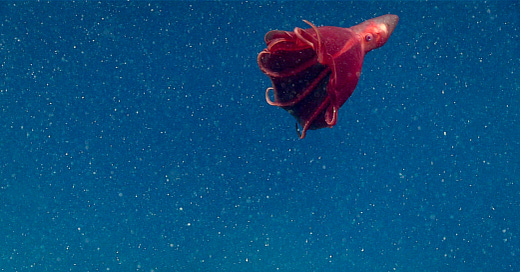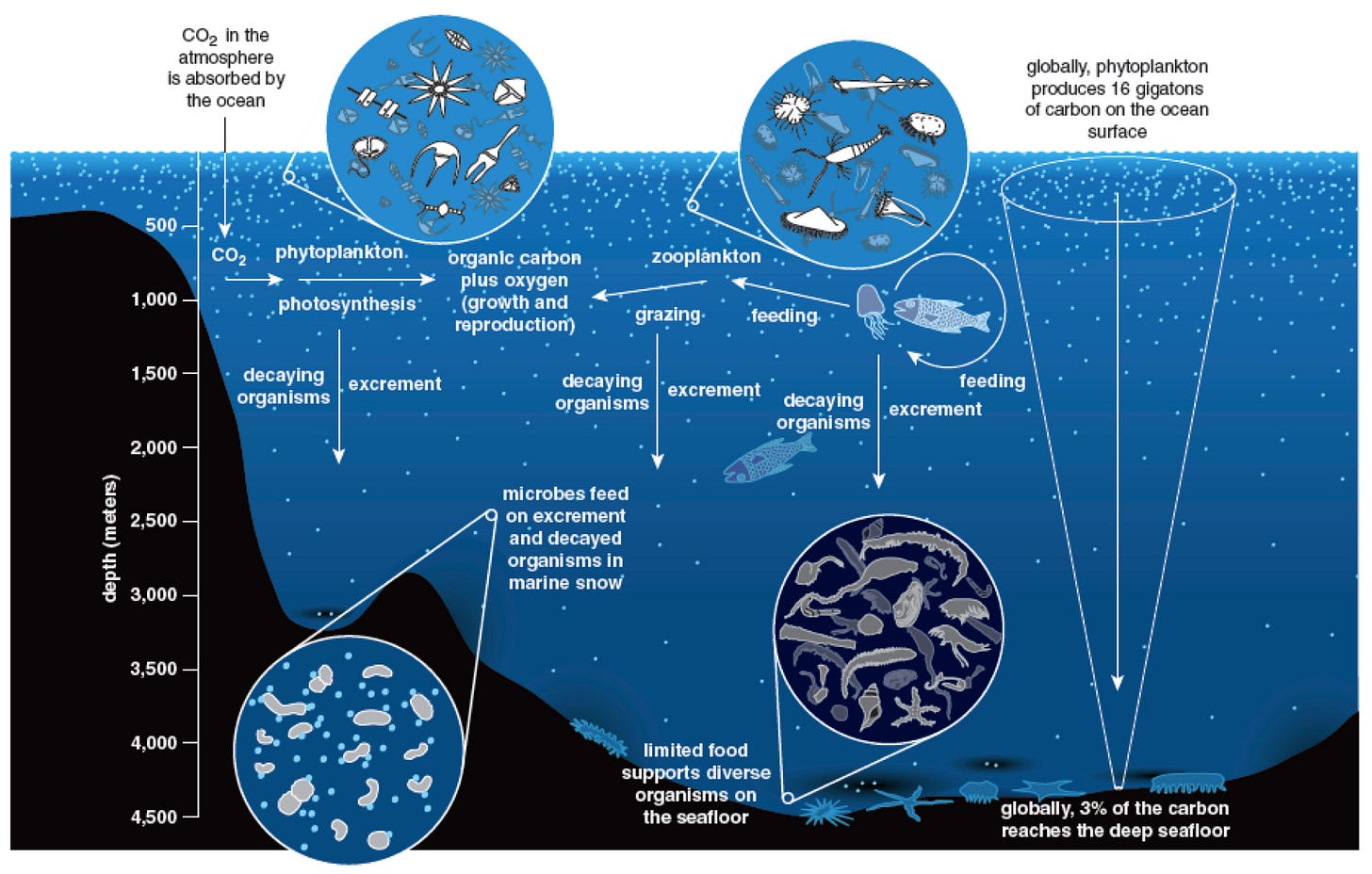Welcome to the first edition of Deep Dives by Beached - an in-depth exploration of everything oceanic, from scientific discoveries to marine mysteries.
Expect a bit of history, science and adventure, as we dive deep into the big blue 🤿
You know those small white specks that can be glimpsed on hazy underwater ocean footage, the stuff that looks like interstellar dust? Well, that stuff is actually called marine snow. Otherwise known as ‘ocean dandruff’, this flurry of dead plants and plankton, faecal matter, sand, soot and other bits of aquatic detritus continuously rain down from the upper layers of the ocean to the deep sea. A silent spectacle which plays a crucial role in ocean ecosystems and the global carbon cycle.
Marine snow particles are generally microscopic but come in various sizes, with some growing to several centimetres as they descend through the water column and begin to cluster together. Each piece is encased in a layer of mucus produced by the organisms within but recent research has revealed that this mucus forms ‘comet tails’ around each flake and slows its sinking speed by up to 50% in the top 100 metres of the ocean.
Due to this slow descent not all marine snow actually makes it all the way to the seafloor — many are consumed by fish, marine mammals, zooplankton, bacteria and other (living) microorganisms on the way down. The snow that’s eaten gets excreted elsewhere in the ocean, restarting the cycle once more. Eel larvae in particular rely on marine snow as a key source of nutrients during their development, and the vampire squid has evolved ways to better catch these falling particles too. However, the particles that do eventually land on the ocean floor are much appreciated. Some serve as a vital food source for deep-sea organisms, providing them with a steady supply of carbon and nitrogen in an otherwise sparse environment, while others contribute to the formation of a thick, smooth mucus layer that covers about three-quarters of the ocean floor.
Marine snow might not seem super important in the grand scheme of things but alongside its functions as a light snack, ocean screensaver and, deep-sea carpet, it’s also a magnificent carbon sequesterer. The muddy mucus layer covering the ocean floor can reach six metres in height every one million years, and aids in burying organic matter, supporting the important role of the deep sea as a carbon sink.
One such example of buried treasure is phytoplankton — the tiny algae that form the foundation of the ocean's food web. These microscopic creatures absorb carbon dioxide at the ocean's surface, converting it into organic matter through photosynthesis. When phytoplankton inevitably become part of marine snow, sinking to the depths, they take that carbon with them. This effectively removes it from the atmosphere and stores it away in the deep sea for a long time.
While marine snow may seem like an insignificant ocean function, its impact on marine life and the global climate is immense. In recent studies scientists have used sediment traps on the ocean floor to learn more about the travels of marine snow, and discovered that an astonishing 815 million tons of carbon reaches the ocean floor every year via these ‘snowfalls’.
For me, marine snow is yet another example of the beauty of our oceans and the interconnectedness of our planet’s ecosystems. After this Deep Dive, I hope you feel the same.
Here at Beached we are building a community that can put our brains and resources together to highlight and fund solutions to the problems facing the ocean and its inhabitants. I hope you’ll join our humble community and click subscribe for free or support our work by purchasing the paid subscription.
All Beached posts are free to read but if you can we ask you to support our work through a paid subscription. These directly support the work of Beached and allow us to engage in more conversations with experts in the field of marine conservation and spend more time researching a wider breadth of topics for the newsletters. Paid subscriptions allow us to dedicate more time and effort to creating a community and provide the space for stakeholders to come together, stay abreast of each other’s work and foster improved collaboration and coordination.
One day Beached hope to donate a large percentage of the revenue from paid subscriptions to marine conservation organisations and charities to support their work too. Working together, we can reverse the degradation of our oceans.
Amie 🐋







Thanks for this interesting post. Great picture as well.